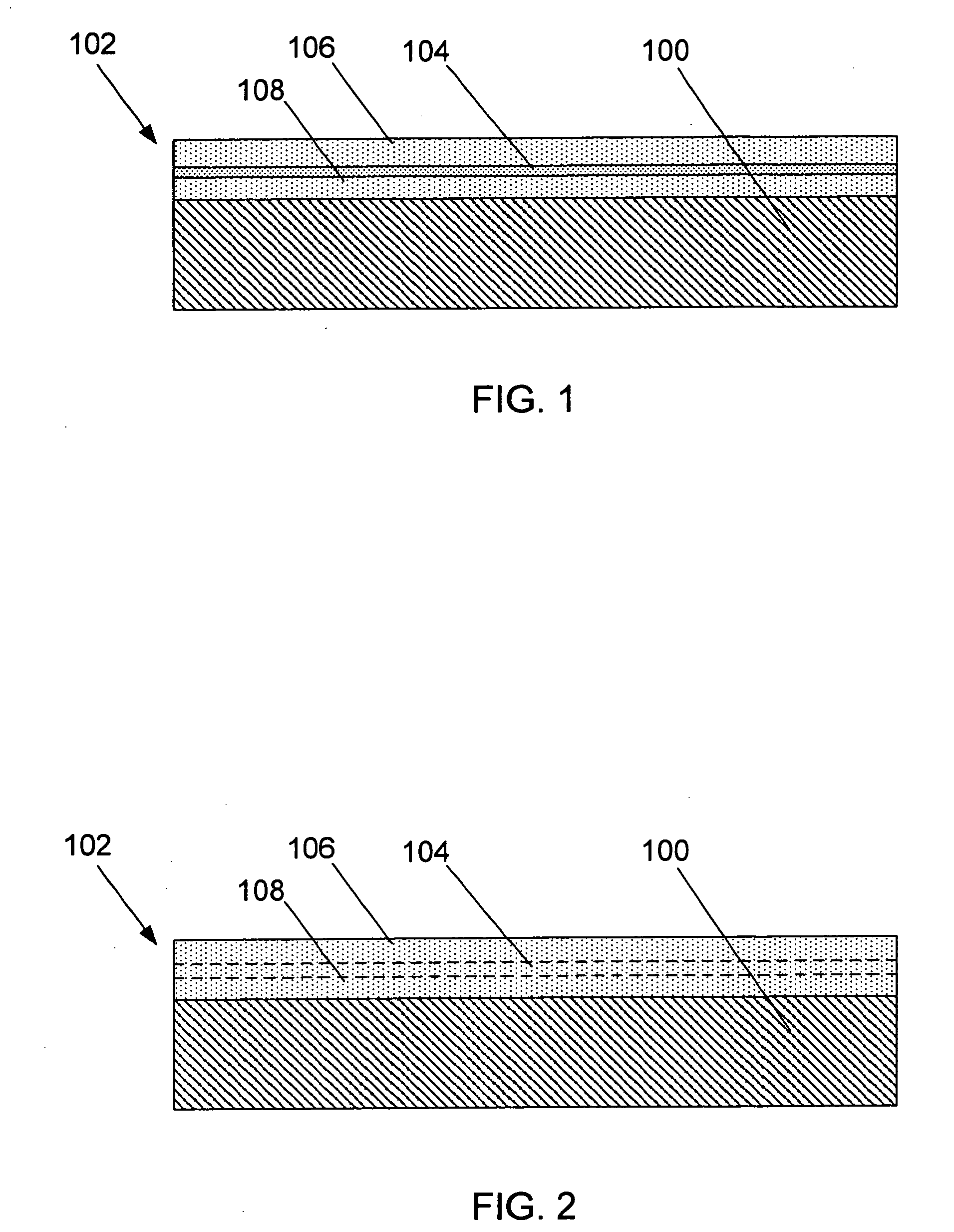Print media for ink-jet ink applications having improved image quality
- Summary
- Abstract
- Description
- Claims
- Application Information
AI Technical Summary
Benefits of technology
Problems solved by technology
Method used
Image
Examples
example 1
[0047] A method of preparing one or more layer(s) of an ink-receiving coating that includes silica, a cationic agent (ACH), and a binder is set forth below. This preparation can be carried out in two stages. The first stage includes coating the silica with ACH. The second stage includes adding the binder and other ingredients.
[0048] Stage 1:
[0049] 1) Charge deionized water (DI) into a mixing vessel;
[0050] 2) Add ACH to the deionized water and increase the pH with a suitable base until completely dispersed with stirring. Note that the stirrer should use a high shear mixing blade and that the diameter of the blade should be at least 50% of the mixing vessel diameter. The mixer should rotate fast enough to produce a vortex. The ACH should be added to produce a concentration selected to be in the range of 5 wt % to 15 wt % based on silica added in next step.
[0051] 3) Add silica slowly and at a constant rate while continuing to stir. Care should be taken in order to avoid clumping as...
example 2
[0059] The coated silica-containing coating composition prepared in accordance with Example 1 can be coated on a media substrate by one of many methods, including a method where the coating is drawn down onto a media substrate, as follows:
[0060] Drawdown method for forming a 25 g / m2 coating.
[0061] 1) Calculate Meir Rod Number to use from the % solids (wet) form.
[0062] 2) Perform draw down on a precut sheet 9 m gell subcoat photopaper base.
[0063] 3) Dry the sheet with a hot air gun set at medium power. When the phase transition of wet coating flashing to dry coating appears, transfer the sheet to a cooling tray. When dry, the Ct Wt should be determined by weighing a 100 cm2 disc and comparing this weight to a disc removed from an uncoated sheet.
[0064] Three layers can be formed using the above technique. In one embodiment, the top and bottom layers each contain 8.5 wt % ACH and are each formed at 8 g / m2, while the intermediate layer contains 10 wt % ACH and is formed at 8 g / m2. ...
example 3
[0065] A coating composition was prepared and applied to a media substrate using a process similar to that describe above in Examples 1 and 2. The coating composition included 19 g / m2 fumed silica treated with about 10 wt % aluminum chlorohydrate (ACH), and further included a polyvinyl alcohol binder. The coating composition had a low viscosity of 100 cP at 100 RPM Brookfield, measured at 40° C. The coating composition had 16 wt % solids content. Upon printing a HP DeskJet 970 ink-jet ink onto the coated media, the image exhibited poor dye color and gamut which could not be corrected by simple pH adjustment.
PUM
| Property | Measurement | Unit |
|---|---|---|
| Size | aaaaa | aaaaa |
| Size | aaaaa | aaaaa |
| Size | aaaaa | aaaaa |
Abstract
Description
Claims
Application Information
 Login to View More
Login to View More - R&D
- Intellectual Property
- Life Sciences
- Materials
- Tech Scout
- Unparalleled Data Quality
- Higher Quality Content
- 60% Fewer Hallucinations
Browse by: Latest US Patents, China's latest patents, Technical Efficacy Thesaurus, Application Domain, Technology Topic, Popular Technical Reports.
© 2025 PatSnap. All rights reserved.Legal|Privacy policy|Modern Slavery Act Transparency Statement|Sitemap|About US| Contact US: help@patsnap.com

